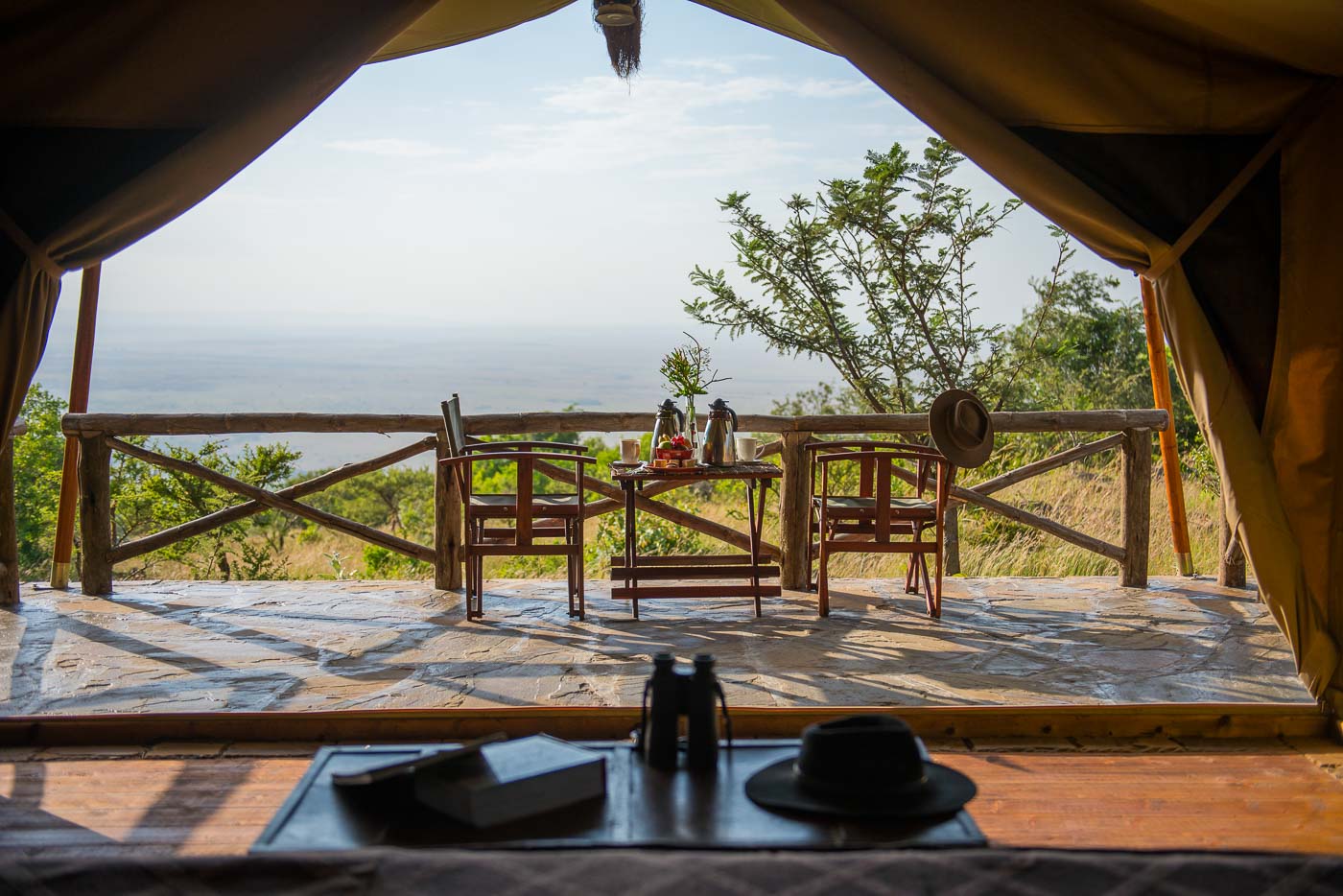When was the last time you sat down to eat with an interesting mixed group, surrounded by wide-open plains, the stars blazing overhead, and not a single distraction? This is standard mealtime at Naboisho Camp, an all-inclusive safari camp inside the 55,000-acre Mara Naboisho Conservancy, within Kenya’s Great Rift Valley.

Our safari began in earnest when, dressed in standard Maasai checkered shuka, our guides Wilson and Benjamin greeted us at the Mara Serena airstrip. Piling into the open Land Cruiser, we set off on the 45-minute game drive that would lead us to Naboisho Camp. The intimate nine-tent camp is one of just seven housed in this exclusive conservancy, which is community-owned. It’s part of the Greater Mara Region and borders the Maasai Mara National Reserve.
Less than 10 minutes into our drive, with Wilson and Benjamin’s keen eyes on the bush surrounding us, we’d spotted a sounder of warthogs, which led us all to think fondly of Pumbaa, the flatulent warthog from The Lion King. Just ahead was a striking Acacia tree from whose branches hung a few dozen nests belonging to the social weaver. By the time we pulled into Naboisho Camp, we’d seen a few giraffe, a zeal of zebra, a gorgeous lilac-breasted roller (Kenya’s national bird), and a herd of antelope—and that was all before lunch.

Meals at Naboisho Camp are a communal affair, served either outdoors in the shade of a big Acacia tree or on a long wooden table in the dining room. There is no Internet (in emergencies, the office computer can be used) and this renders mealtimes full of good conversation. Camp managers Helen and Roelof Schutte sit down to dinner nightly with guests; on our first night at Naboisho, over a salad of snap peas and tomatoes, we learned that after college, Helen worked at Disney World, inside the Animal Kingdom park. On the second night, we spoke with Roelof about his experiences growing up in South Africa.


After dinner, our group retreated to the fireplace to continue our discussion over drinks, but guests tend to turn in early at Naboisho Camp, happily worn out from a day of game-drives. At night, a ranger accompanies each guest back to his or her tent, though tent really does not do justice to the accommodations at Naboisho Camp. This is glamping in the truest sense of the word. Each of the nine tents (two of which are for families) has a verandah with day bed, wicker chairs, and an infinite view of the bush. Ensuite bathrooms have a flush toilet and hot running water shower; towels are thick and plentiful. The plush beds are a most welcome respite after a day in the Landcruiser. Rangers patrol the property all night, and on the desk in each room are a flashlight, an air horn, and a walkie-talkie whose calls go to the staff. In the morning, we watched the sun rise over the grass, sipping coffee and munching a few biscuits that had been delivered at our requested wake-up time.

Days at Naboisho Camp start with either breakfast in the main lodge or with a morning game drive and bush picnic. Sitting in the shade of a tree, sipping Kenyan tea and coffee and tucking into a veritable feast is a lovely way to begin a day of activities. Naboisho offers game drives and bush walks and can easily arrange visits to a nearby homestead, where you can meet a local Maasai family. We had picked up a soccer ball in Nairobi, and as the sun set over the plains, we kicked it around with the half dozen kids in the homestead. It’s hard to decide which is a better way to end a day at Naboisho Camp: watching pint-sized locals trying to score a goal, or having a sundowner around the roaring bonfire while listening to the guides’ stories. Luckily, you don’t have to choose.

















